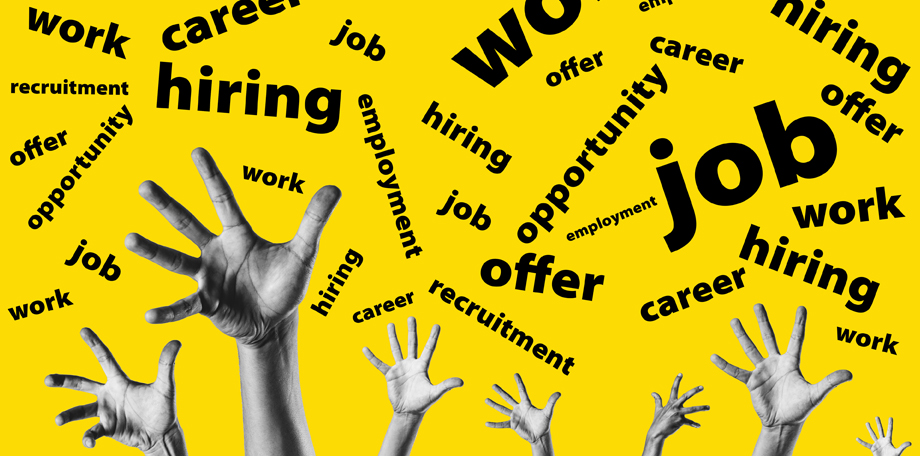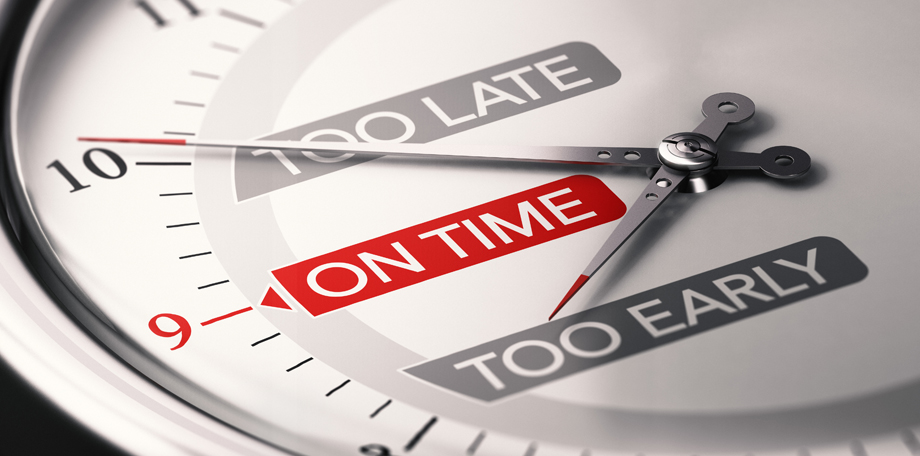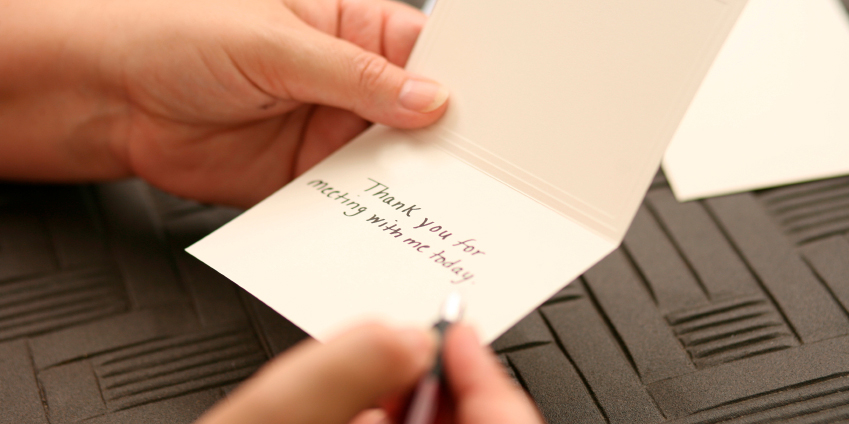Looking for a job? Welcome to the club — and it’s a competitive one. The average corporate job opening attracts 250 candidates, with four to six of these applicants getting a call for an interview and one person receiving a job offer.

While those odds can be intimidating, that one person can be you — if you handle the interview process with care. An interview provides you with an opportunity to stand out among the other candidates, proving to the employer that you are their best choice in a new hire.
From the Other Side of the Desk: What Do Employers Want?
When interviewing for a job, it’s easy to get caught up in your own spiral of nerves and excitement. But it’s also important not to lose sight of what’s transpiring on the other side of the hiring desk. Whether an employer is trying to replace someone who has left or is expanding a team, they have a position they want to fill. The interview process allows them to evaluate their options.
What do employers want in the ideal candidate? While the answer to that question depends on the specific job and employer, in general, they look for someone who can not only carry out the duties of the job, but who will also fit in with the culture of the team and organization.
The Four C’s of the Ideal Candidate
Throughout the interview process, you will likely meet with a variety of people involved in the hiring decision, from human resources representatives to potential colleagues, department managers and company executives. Collectively, they will be evaluating you in four broad categories:
- Capability — Can you do the job?
- Communication — Do you possess strong verbal and nonverbal communication skills?
- Confidence — How self-assured are you? Are you confident in your abilities and your worth? Do your stories and body language convey confidence in response to sensitive questions (e.g., employment gaps, reasons for job changes, etc.)?
- Congruency — Are you a good fit with the organization and its culture?
How to Avoid the Top 9 Interview Blunders
Like an audition, you will be on a figurative stage during the entire interview process. While you want your “performance” to be authentic, you also want it to be as flawless as possible. Every detail matters. How can you avoid making a mistake that could cost you the job?
Paying careful attention to each of the three phases of the process — preparation, performance and follow-up — can help you avoid making a mistake that could hinder your chances of landing the job.
Following are 9 common interview faux pas — and what you can do to avoid them.
Blunder #1: Not knowing enough about the company
How to avoid it: Do your homework.
Prior to your interview, research the company to find out as much as you can about its history, products and services, customer base, management, culture and current events. By visiting the company website and its social media pages — Facebook, Twitter, Instagram and LinkedIn — you can gain a great deal of insight. Take it a step further by visiting Glassdoor to see what current and former employees are saying about the company, and do a Google search to see if the company has been in the news lately.
The point of your research is not to impress your interviewer with facts and figures, but rather to be able to engage in meaningful dialogue and to ask educated questions when appropriate.
Let’s say you’re interviewing at a brokerage firm that recently unveiled a social impact investment strategy that you read about on LinkedIn. When you mention it in one of your answers, you’ve immediately put yourself ahead of the candidate who provides a vanilla response to the same question.
Blunder #2: Being rude to the receptionist
How to avoid it: Treat everyone you encounter with courtesy and respect.
Every person with whom you come in contact on interview day should be the recipient of your best manners. Be nice to everybody, from the security guard to the receptionist to the CEO. The Golden Rule aside, you never know who is watching you, or whose path you might cross. Smile and say “thank you” to the woman who holds the elevator for you — she could be the department manager with whom your last interview of the day is scheduled.
Blunder #3: Mismatching your socks
How to avoid it: Try on your interview outfit ahead of time.
Navy and black might pass muster under the table in a dimly lit restaurant, but under the fluorescent lights of an office, a pair of mismatched socks might send the wrong message — i.e., “This person doesn’t pay attention to detail.”
Avoid last-minute laundry or wardrobe emergencies by planning and trying on what you will wear to the interview in advance, leaving nothing — not even socks or accessories — to chance. This is one case where you will be judged on your appearance, and first impressions matter.
Blunder #4: Showing up ten minutes late
How to avoid it: Plan your route a day or two before the interview.
Whether you’ll be driving, walking or using public transportation, map out your route ahead of time. If the interview is located in an area unfamiliar to you, allow extra time or — better yet — do a dry run of your intended route to avoid being surprised by road construction or a detour on the day of the interview. If you make the trip at the same time of day, you will also be able to take into account traffic, which gets heavy at unexpected times in many places (think school zones, factory districts, etc.).
There is no such thing as “fashionably late” when it comes to interviews. In fact, our career coaches recommend arriving at the interview 15 minutes before your scheduled appointment time. After you check in, use any extra time in the waiting area to center yourself and practice breathing techniques.
Blunder #5: Offering a limp handshake
How to avoid it: Create a powerful first impression somatically.
Communication is only partly verbal; in fact, some statistics say that as much as 93 percent of our communication is conveyed through body language, facial expression and tone of voice.
Your interviewer(s) will form their first impression of you within the first few seconds that you meet, beginning with your handshake. Make sure you convey confidence and openness with a firm handshake, combined with good posture, strong eye contact and a genuine smile when introducing yourself to someone new.
Blunder #6: Sounding awkward or clumsy
How to avoid it: Rehearse your responses.
This is it — performance day. There are no “second takes” or do-overs. One way to make sure that your responses sound as good rolling off your tongue as they looked on paper is to rehearse them. By practicing your responses out loud — preferably in front of a mirror or a trusted friend — you become aware of phrases that sound clumsy and need to be reworked. You also commit your responses to memory so that they become more natural during the actual interview.
Being prepared helps keep your answers on point. When your responses are organized in your mind, you will be less apt to ramble or to veer off on tangents.
Blunder #7: Being thrown off course by “trick questions”
How to avoid it: Arm yourself with a strategy.
Throughout the course of an interview process, questions might range from the mundane to the bizarre. Some might be open-ended — “Tell me about yourself” — while others might ask for a specific response. None are as random as they might seem, offering the interviewer a glimpse into who you are and how you think.
No matter how well you prepare, there is always the chance that an interviewer will ask a question that throws you for a loop. Rarely is there a “correct” answer to an off-the-wall question; rather, it can serve as an opportunity for the interviewer to see how well you think on your feet, to get a feel for your personality, to test your creativity and to assess your ability to reason.
Don’t be blindsided by these questions; expect them, and be prepared with a strategy. Our career coaches recommend the following approach to handling tricky interview questions:
- Remain calm and composed.
- Smile.
- Take a breath and, if available, a sip of water.
- Collect your thoughts before you begin to answer.
- Once you begin your response, stay on track, committed to your line of reasoning.
- Move on to the next question; do not ruminate over whether your answer was “right” or “wrong.”
Blunder #8: Embellishing your skills or experience
How to avoid it: Be honest.
It goes without saying that your resume should accurately reflect your skills and experience, but an interviewer might mention — or specifically ask about — something not mentioned in the job description. Whether the reference is to working with a particular type of client or software program, honesty is the best policy: If you have limited or no experience with it, be forthright in your response.
You can, however, turn this type of question into an opportunity to showcase your initiative by saying, “I’ve never worked with Google Analytics before, but I know it’s an important tool in measuring website performance, and I would love to learn how to use it!” You can even follow up with a mention of a similar system that you learned in your previous position, illustrating your willingness and ability to gain new proficiencies.
Showing that you have confidence in your ability to learn a new skill or work outside of your comfort zone will earn you far more points in an interview than apologizing for your deficiencies — or, worse yet, padding your abilities or experience.
Blunder #9: Thinking that your work is done when you walk out the door
How to avoid it: Take stock of your performance and follow up with a post-interview thank-you note.
Immediately after the interview, our career coaches recommend that you:
- Jot down important points to remember. Who did you meet and what did you discuss? Did any topics come up in conversation that merit further research so that you will be more informed for another round of interviews or … a job offer?
- Make a list of the questions asked in the interview and an assessment of how well your responses were received. This reflection exercise will help you make future adjustments, if necessary.
- Write and mail a thank-you card to each person you met in the interview process.
Want to stand out? Send handwritten notes; not only are they rare in this digital age, but they also lend a personal touch. But be sensitive to the industry in which you are interviewing; a handwritten note in the technology industry may not be received as well as in another industry. A formal thank-you letter that matches the format of your cover letter is fine if that’s a better fit for your personal brand.
The message should thank the person for taking the time to meet with you, reiterate your interest in the position and highlight any of your strengths that you believe would benefit the organization. Ideally, you want to personalize each note by including a comment that connects the recipient back to the interview so that it sounds authentic and thoughtful, rather than like a form letter.
The Biggest Blunder of All
Perhaps the biggest blunder of all is beating yourself up over making a mistake during an interview. Even if you’ve done everything “right,” keep in mind that you are competing with other people who may simply be more qualified or a better fit for the position than you. Brush yourself off and move on to the next with a positive attitude and renewed enthusiasm.
Every interview presents an opportunity to hone your performance. A professional interview training session with one of our certified career coaches can help you dramatically improve your interviewing skills.




